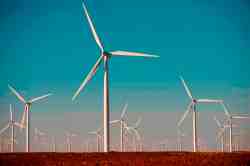This month several reports have been released on the global growth of renewable energy. According to two new reports released by the United Nations Environment Programme and the Renewable Energy Policy Network for the 21st Century (REN21), for two consecutive years, the United States and Europe added more power from renewable sources such as wind and solar than from conventional sources such as coal, gas and nuclear.
As reported in the Renewables 2010 Global Status Report, renewables accounted by 60 percent of new installed capacity in Europe and accounted for 50 percent of new installed capacity in the U.S in 2009. Experts are predicting that within the next two years, the world as a whole will follow-suit and add more capacity to the electrical grid from renewable than non-renewable sources.
However, this week, the U.S. Energy Information Administration released its International Energy Outlook 2010 which anticipates energy growth from 2007 to 2035. The report anticipates that fossil fuels are expected to continue to supply much of the used worldwide and predicts that electricity generation will grow by an average of 3.0 percent per year and the renewable share of the world electricity generation will increase from 18 percent in 2007 to 23 percent in 2035. Generation from natural gas and nuclear power increase 2.1 and 2.0 percent per year, respectively while coal-fired power is expected to increase an average of 2.3 percent. This would make coal the second-fastest growing source for electricity generation worldwide.
The result of continued growth of fossil-fuel based energy, according to the International Energy Outlook 2010 is that world-energy related CO2 emissions are expected to rise from 29.7 billion metric tons in 2007 to 33.8 billion metric tons in 2020 hitting a high of 42.4 billion metric tons on 2035. This is an estimated CO2 emission projection increase of 43 percent over the next 28 years.
The UNEP Global Trends in Sustainable Energy Investment 2010 report that was released in conjunction with the renewable report, followed trends in clean tech investments and noted that investments in the core clean energy (renewables, biofuels and energy efficiency) decreased by 7 percent in 2009 to $162 billion. While many subsectors declined considerably including biofuels and large solar projects, wind energy saw record investment in 2009.

Large parabolic solar dishes for community kitchens, Muni Seva Ashrams, India, credit: GTZ/ Michael Netzhammer
Yet while clean tech investments were down globally, they were actually up in China – by 53 percent. China added 37 gigawatts (GW) of renewable power capacity, more than any other country.
“There remains however a serious gap between the ambition and the science in terms of where the world needs to be in 2020 to avoid dangerous climate change, said UN Under-Secretary-General Achim Steiner. “But what this five years of research underlines is that this gap is not unbridgeable. Indeed, renewable energy is consistently and persistently bucking the trends and can play its part in realizing a low carbon, resource efficient Green Economy if government policy sends ever harder market signals to investors.”
The growth of renewable energy has been driven, in part, by public policy. Today, more than 100 countries have some sort of renewable energy programs and policies in place.


